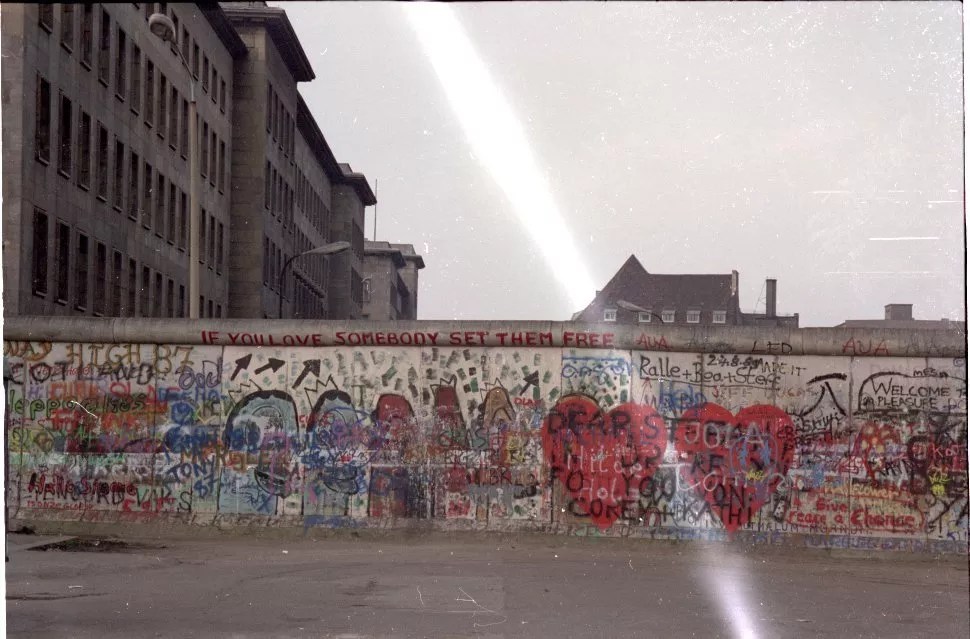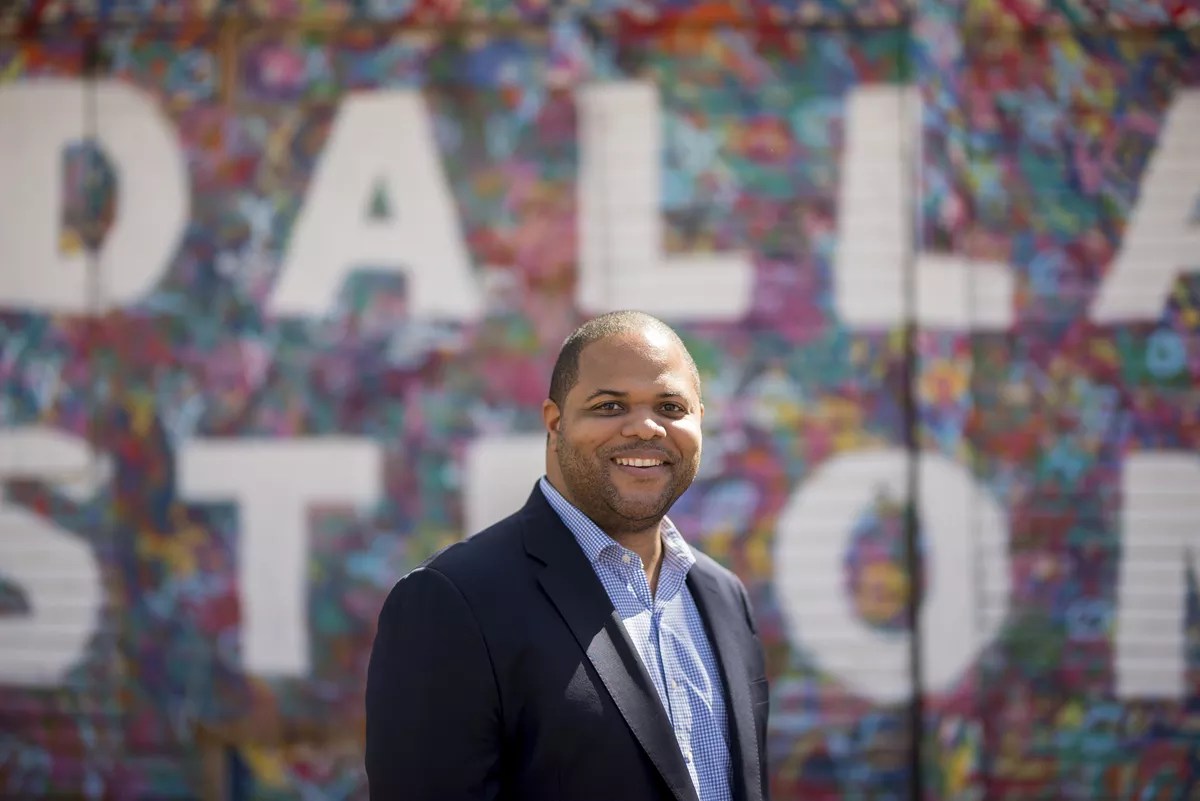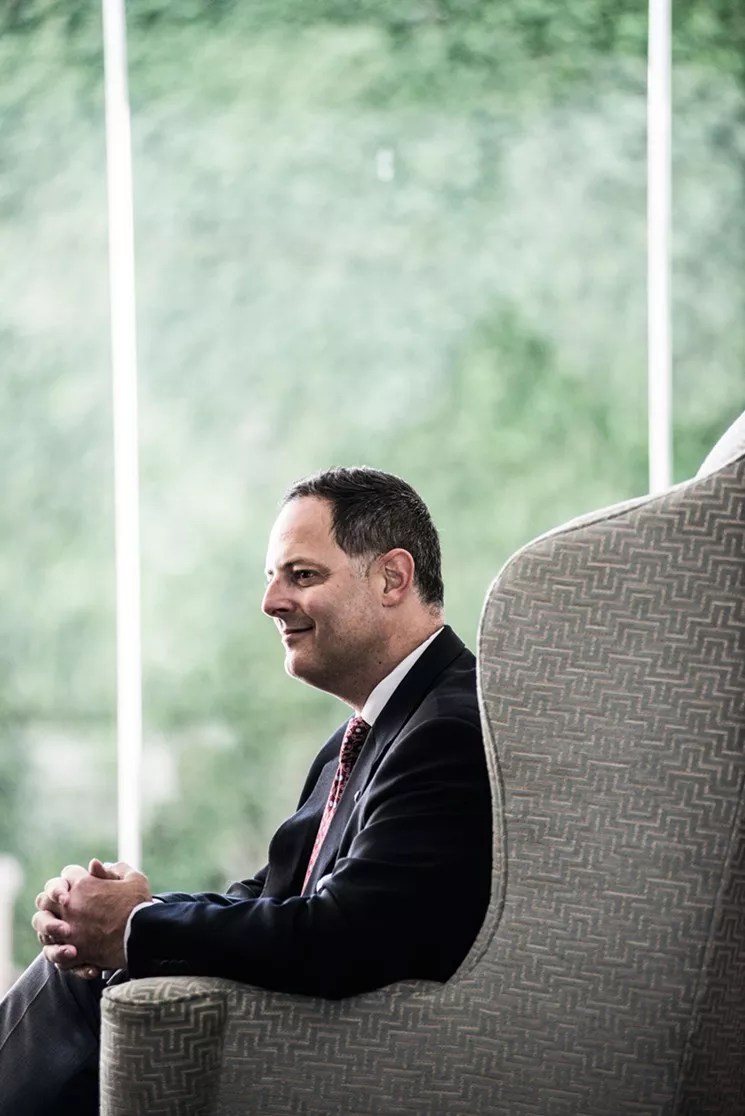
J Dykstra via Wikipedia

Audio By Carbonatix
“Perception,” which usually means racism, is often taken for a 30-foot Trump wall, as if it separates whole regions of the city in ways that can never be breached. But earlier this week I wrote about the miracle or curse, depending on your view, taking place in West Dallas now: Bare house lots have gone from $12,000 to $80,000 in a year, because the perception about West Dallas has changed overnight.
We can talk about why. We can talk about how. We can talk about whether it’s a good thing or not. I guess I can’t get out of this without talking about the ways in which I have been very wrong about the effect that damned decorative bridge across the river to West Dallas would have. Please notice I said very which is not the same as totally.
But let’s not miss the main point. Perception changed. That’s the big thing. And the minute it changed, those house lots started multiplying in value.
When we say, “perception,” what we really mean is white people’s perception. That’s who gets walled out.
This year, make your gift count –
Invest in local news that matters.
Our work is funded by readers like you who make voluntary gifts because they value our work and want to see it continue. Make a contribution today to help us reach our $30,000 goal!
But, wait. First, whose perception? Good point. When we say, “perception,” what we really mean is white people’s perception. That’s who gets walled out. Well, actually, we white people wall ourselves out.
Two years ago West Dallas was a scary bad place where white people would die instantly if they ever even cracked open their car windows. Guns were trained on the windows constantly, waiting for the white people to open them even a slit, then BLAMMO! No more white people.
Now overnight West Dallas is a cool ethnically accented place where you can still get in for eighty grand, and then, if you’ve got a view of the bridge, you will be able to flip the place in five years for five times that much or more. And you can get out of your car and not get BLAMMO’d. Probably. But do the math: The equation for gentrification is always the amount of money you can make in five years divided by your chances of getting BLAMMO’d. West Dallas is lookin’ good now.
I’ll come back to all of that gentrification business, because it’s very important. The larger point is that perception, meaning racism, is not monolithic, not immutable, not a 30-foot Trump wall. The wall can fall. But something has to happen to knock it down.
These thoughts came to me earlier this week when I sat on a panel at a City Council candidate forum in southern Dallas, held at Robert Pitre’s Skyline Ranch, a beautiful 90-acre horse farm in the heart of southern Dallas. And, yeah: how’s that for your perception? How many white people know that the yonder world on the other side of racial perception includes beautiful horse farms in southern Dallas?
At the forum, District 8 incumbent City Council member Erik Wilson talked about the areas of southern Dallas that are far more affluent and more diverse than the North Dallas perception ever imagines. Sitting next to me on the panel, real estate investor Randy Bacon shook his head in grim agreement.

State Representative Eric Johnson
Brian Maschino
Pitre’s ranch and the well-off neighborhoods of southern Dallas are erased from reality in the minds of white people because their perception of the world simply won’t encompass those possibilities. The phenomenon is so powerful it’s weird.
But it isn’t invincible or necessarily permanent, and West Dallas is the proof of that. Something dramatic can happen, like that damned bridge, and the sheer power of drama can breach the wall of perception.
Before the new Santiago Calatrava-designed make-believe suspension bridge opened in 2012, I wrote some things to the effect that it was a bridge to nowhere, a fool’s errand and a joke that would never change anything in West Dallas. Almost the minute it opened, it began changing everything in West Dallas.
Three investors – Stuart Fitts, Butch McGregor and Phil Romano – dove into the blasted and abandoned industrial dystopia at the foot of the new bridge and began gobbling up land on the absurd assumption that West Dallas would quickly become the city’s next hot hipster neighborhood, exactly what is happening now. Obviously that’s wonderful for them. It may or may not be wonderful for the people who were already living nearby.
Soaring land values, escalating taxes and a lot of unecessarily sharp-elbowed pushiness have combined to make life problematic for working class Hispanic and black families who have been there all along. That’s the typical saga of gentrification. I have written a lot here about ways in which City Hall not only has failed to soften that blow in West Dallas but even seems at times to be conspiring with developers to make it worse.
But a huge caveat came to me while I sat listening to that dialogue at Skyline Ranch. It has to do with this: My own view of development and gentrification over the years has tended to be fairly zero-sum. I don’t like it.
I think people of the other persuasion have been equally monolithic, in that they have tended to paint gentrification as an unqualified good. In both views, of course, gentrification always means white-ification, so the debate has tended to come down to whether one thinks it’s a good idea or a bad idea to white-ify a neighborhood.
That debate is deeply embedded in the culture and experience of the post World War II baby boom generation. It’s what people my age have spent our lives talking about. And talking and talking.
The exciting thing in West Dallas, however, is the early emergence of what I suspect will be a whole new way of looking at the landscape. State Rep. Eric Johnson, who is African-American and lived in West Dallas as a kid, and state Rep. Rafael Anchia, who is Hispanic, have been collaborating on legislation that would capitalize on gentrification as a source of money they want to use to harden and secure existing neighborhoods.
The city gives mammoth cash incentives to developers in West Dallas, bankrolled by the increase in land values and city tax revenue that the city anticipates will come from the new developments. Anchia and Johnson want to craft a way to capture some of that new wealth and use it to improve the infrastructure in surrounding neighborhoods, as well as cushion older residents from steep increases in property taxes.
Before we jump straight into a fight over the money – whose is it and how much should they get? – let’s pause long enough to take note of a very important new perception that is logically prior to the dividing up of the moolah. In this new view of the landscape, gentrification is a good thing. For everybody.
Gentrification, viewed this way, is no longer zero-sum. In fact it’s no longer white-ification. In this view, gentrification is an ethnically inclusive economic wave on which all boats may rise. This is a view that would encompass the building of that damned bridge as a good thing, insofar as it breached the wall of perception and brought investment to an area long starved of it.
It’s not a naÁ¯ve Pollyanna view. It wants to meet gentrification at the foot of the bridge, put up its hand and say, “Stop right here until we agree on how this is going to go.”
The kinds of things Johnson and Anchia are talking about seem to erase or maybe just ignore the ideological, class-bound and racial battle lines on which my own generation spent so much time and effort. I’m not saying we wasted our time. Every generation ought to fight its own fights on its own lines. But if I fly up over West Dallas, squint my eyes just the right way and look out citywide, I can see similar phenomena beginning to emerge all over the city.

State Rep. Rafael Anchia
Can Turkyilmaz
The new younger leadership on the City Council doesn’t really fall into place along the old lines. They tend to be anti-establishment, because they are young and the establishment is old. They’re way less racist, because they grew up in a way less racist culture. But they’re not leftist or collectivist really. They seem to embrace individualism, family, enterprise and self-sufficiency. They just don’t want to wear uniforms about it.
They possess some combination of self-confidence and tolerance that allows the new younger members of the council to be much more pragmatic, to just get more done for everybody than the older leadership can accomplish at this point.
Plus – and I know they don’t tell me this because they are being sensitive to my needs – I think they like that stupid bridge. They understand that the walls of perception can come down. It can happen quickly. Everything can change overnight. But it may take some showmanship.
I see every reason to assume that the Eric Johnsons and the Rafael Anchias of our city, far from being one-offs or eccentric, are exemplars of an enormous generational shift away from the old dichotomies. If we were to fly up to satellite altitude and look down, we might be able to take in Emmanuel Macron in France and Justin Trudeau in Canada, both as expressions of this new post-ethnic, post-nationalist pragmatism, not to mention our own recently departed former president.
And what does that have to say about what’s going on right now in the national government? Well, I’m talking about tomorrow. The clock only moves in one direction.
Look, that bridge is stupid. I’m never giving up on that one. But it’s nowhere near as stupid as the old walls of perception. They’re going to come down, and, when they do, they will fall quickly, like the Berlin Wall. Berlin Wall? Come on. You know this one. It was on your European history exam.